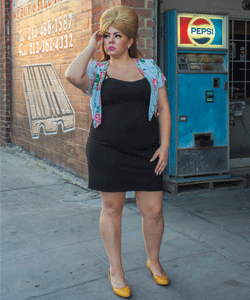The Nasher Museum of Art was born in 2005, making it a toddler in the art world. That youth might seem like a hindrance. After all, a museum’s collection is what most defines it, and a collection tends to accrue steadily with the passage of time.
But Trevor Schoonmaker, the museum’s deputy director of curatorial affairs and the Patsy R. and Raymond D. Nasher Curator of contemporary art, calls the Nasher’s youth a “huge advantage.” As peer institutions work to diversify collections that have historically skewed white and male, the Nasher’s task is easier. “We don’t have a ton of blind spots, because we’re so young,” says Schoonmaker, noting that the Nasher, which already draws from a “foundational base” of works from artists of African descent, doesn’t have to respond to and rectify a collection built in a bygone era.
With that in mind, the Nasher’s latest exhibition, “People Get Ready: Building a Contemporary Collection,” represents both what the Nasher has accomplished in its first dozen years and “a statement about what we’re trying to do,” Schoonmaker says, as the museum grows into its teens and beyond. In some ways, it’s a highlight reel—attendees will note a number of works previously on display, especially in the recent “Southern Accent” exhibit, also curated by Schoonmaker—and a step forward, boasting a number of key new acquisitions.
One such piece is Fifty Shades of White, a re-mapping of the United States from Jaune Quick-to-See Smith. On the canvas, north and south of the country’s borders lie vibrant teals, reds, and yellows, but inside exists nothing but pasty, homogenous hues. Gone are names like North Carolina and Georgia, replaced instead with “Breakwater White” and “White Peach.” A closer look reveals smaller, bolder text: This Country was Brown for thousands and thousands of years, it says. White is only temporary, by 2030 this country will be Brown again. “The idea isn’t to have just this black-white dialogue,” Schoonmaker explains—Smith is Native American—“but a broader conversation.”
At times, the exhibition reads as an unstoppable wave of outrage, a celebration of underappreciated and underrepresented artists who have long deserved the spotlight. They now have it, but they’re justly peeved at having had to wait so long. There’s Gary Simmons’ Erasure Chair, a complete covering of a schoolroom desk and chair with dark felt erasers— its central placement in the gallery amplifying the vacancy it presents. There’s Dario Robleto’s colorful trio of fake folk albums, notably Americana Materia Medica, envisioning tracks with self-effacing yet direct titles like “Biochloride of Patriotism” and “A Material That Fuels a Dream Ignites Itself.” And there are even crazier titles that turn seemingly serious double images into painful zingers—as in Rashid Johnson’s Self-Portrait as the Professor of Astronomy, Miscegenation, and Critical Theory at “The New Negro Escapist Social and Athletic Club” Center for Graduate Studies.
“I’d rather have an ‘A’ work by an artist that people don’t know,” than include a lesser work by a big-name artist, says Schoonmaker.
“People Get Ready” is a collection show—and a sprawling one, filling the modern exhibition space and spilling over into the museum’s historical art galleries. Developing the Nasher’s holdings with such a focus on diversity will have similarly widespread effects, from the university’s scholars who will analyze the works, to the marginalized artists who, whether featured here or inspired by the collection, will benefit from the potential shift in the canon. The hope is to build shows with more targeted themes, such as an exhibition devoted to music and sound, which Schoonmaker describes as “the primary source of inspiration for what I do.” (“People Get Ready,” he quickly points out, comes from the 1965 single by Curtis Mayfield and the Impressions.)
But above all, Schoonmaker emphasizes, it’s powerful to take this step in Durham, in North Carolina. The collection reads differently in the South, in a city and a state that were part of the battleground for the civil rights movement. “People Get Ready” is a statement, one that’s emphatic if not bold, that such a focus will continue to be meaningful.
“The conversation is never-ending,” says Schoonmaker, of the continued work necessary to find and amplify these long-ignored voices. “I think it’ll always be topical, and it’ll always be pertinent.”

Share your comments
Have an account?
Sign in to commentNo Account?
Email the editor